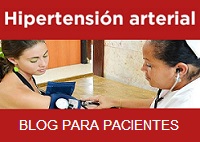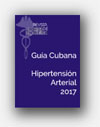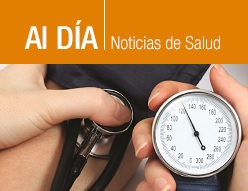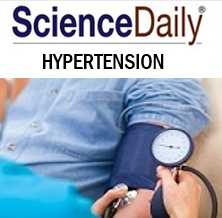 Por: Paolo Giorgini, Rinaldo Striuli, Marco Petrarca, Luisa Petrazzi, Paolo Pasqualetti, Giuliana Properzi, Giovambattista Desideri, Stefano Omboni2 Gianfranco Parati y Claudio Ferri. Hypertension Research (2013) 36, 795–798.
Por: Paolo Giorgini, Rinaldo Striuli, Marco Petrarca, Luisa Petrazzi, Paolo Pasqualetti, Giuliana Properzi, Giovambattista Desideri, Stefano Omboni2 Gianfranco Parati y Claudio Ferri. Hypertension Research (2013) 36, 795–798.
An increased rate of cardiovascular and cerebrovascular events has been described during and immediately after earthquakes. In this regard, few data are available on long-term blood pressure control in hypertensive outpatients after an earthquake. We evaluated the long-term effects of the April 2009 L’Aquila earthquake on blood pressure levels, as detected by 24 h ambulatory blood pressure monitoring. In conclusion, this study shows that patients with unchanged therapy display marked blood pressure increments up to more than 1 year after an earthquake, as well as long-term quake-related discomfort. [Actualizado: 10 de septiembre de 2013].
Para poder ver la noticia de su fuente original debe tener internet.
La psoriasis se asocia fuertemente a la hipertensión arterial
 La psoriasis aumenta el riesgo de que una persona sufra hipertensión arterial, por lo cual todas las personas con esta patología de la piel deberían controlar regularmente su presión.
La psoriasis aumenta el riesgo de que una persona sufra hipertensión arterial, por lo cual todas las personas con esta patología de la piel deberían controlar regularmente su presión.
Dichas recomendaciones fueron presentadas por la Federación Internacional de Asociaciones de Psoriasis (IFPA, por sus siglas en inglés). Los expertos apoyaron una advertencia reciente que hizo la Organización Mundial de la Salud (OMS), que enfatizó los riesgos a la salud que presenta la hipertensión y recomendó a los médicos que controlen a las personas con psoriasis.
“Los profesionales de la salud deben ser conscientes del riesgo elevado de desarrollar hipertensión que tienen las personas con psoriasis, y controlar regularmente si adquieren esta condición o tienen factores de riesgo para patologías cardiovasculares”, recomendó Lars Ettarp, presidente de IFPA.
La psoriasis es una enfermedad no contagiosa que afecta a 125 millones de personas en el mundo. Esta patología inflamatoria de la piel causa picazón y parches dolorosos en zonas donde la piel está engrosada y enrojecida. Generalmente estas marcas aparecen en los hombros, cara, rodillas, espalda, cuero cabelludo, manos y pies, pero también pueden estar en otras partes del cuerpo.
Esta enfermedad aumenta el riesgo de que las personas desarrollen diabetes, artritis, depresión e hipertensión. Pero el tratamiento temprano y efectivo disminuye fuertemente el peligro de que sufran estas patologías.
La Organización Mundial de la Salud detalla que la hipertensión afecta a uno de cada tres adultos. Cada año, alrededor de 9 millones de personas mueren a causa de dificultades generadas por esta patología, que puede ser prevenida y controlada.
Los especialistas explican que ciertas conductas promueven el desarrollo de la hipertensión, como tomar mucho alcohol, no hacer actividad física o consumir mucha sal. Además, enfermedades inflamatorias como la psoriasis también se asocian fuertemente a la hipertensión.
De hecho, un estudio realizado en 2012 recomendó a las personas con psoriasis que sean conscientes del riesgo elevado de desarrollar otras patologías, como la resistencia a la insulina, obesidad, enfermedad cardiovascular y niveles altos de colesterol.
(Fuente: elvocerous.com) [Actualizado: 12 de septiembre de 2013]
Estudios importantes sobre hipertension arterial de Cuba y el mundo
 Hypertension, not essential: an epidemic preventable by improved eating patterns
Hypertension, not essential: an epidemic preventable by improved eating patterns
Por: J Stamler. Journal of Human Hypertension (2013) 27, 581–582.
In most populations worldwide, blood pressure (BP) rises substantially with age from youth through middle age. The consequence is that adverse BP levels—prehypertensive and hypertensive—are epidemic, as are their adverse effects: morbidity, disability and premature death from major cardiovascular diseases (CVD; coronary heart disease, stroke, congestive heart failure and so on).
For decades, most persons with high BP were diagnosed as having essential hypertension.The word essential in front of hypertension served physicians as a tidy way to signify ignorance of the causes of adverse BP, and to justify—in the era before effective antihypertensive medications—‘watchful waiting’ and ‘judicious neglect’.
[Actualizado: 30 de septiembre 2013]
Relationships between metrics of visit-to-visit variability of blood pressure
 Por: E B Levitan, N Kacirot2, S Oparil, S Julius y P Muntner. Journal of Human Hypertension (2013) 27, 589–593.
Por: E B Levitan, N Kacirot2, S Oparil, S Julius y P Muntner. Journal of Human Hypertension (2013) 27, 589–593.
This paper examines relationships between metrics of visit-to-visit variability (VVV) of blood pressure (BP) to determine which metrics should be calculated in studies of the association of VVV with health outcomes.
We examined correlation and agreement between quintiles for standard deviation (s.d.), standard deviation independent of the mean (SDIM), coefficient of variation (CV), successive variation (SV), average real variability (ARV), range, maximum, peak size and trough size of systolic BP in the Trial of Preventing Hypertension placebo arm (n=288). The average age of participants was 48 years. Mean systolic BP was 133.5 mm Hg. VVV metrics were all significantly correlated (P<0.001).
[Actualizado: 30 de septiembre 2013]
 Por: A Ziv1, O Vogel, D Keret, S Pintov, E Bodenstein, K Wolkomir, K Doenyas, Y Mirovski y S Efrati. Journal of Human Hypertension (2013) 27, 594–600.
Por: A Ziv1, O Vogel, D Keret, S Pintov, E Bodenstein, K Wolkomir, K Doenyas, Y Mirovski y S Efrati. Journal of Human Hypertension (2013) 27, 594–600.
Complementary medicine advocates the use of a multifactorial approach to address the varied aspects of hypertension. The aim of this study was to compare the blood pressure (BP) effect and medication use of a novel Comprehensive Approach to Lowering Measured Blood Pressure (CALM-BP), based on complementary medicine principles, with the standard recommended Dietary Approach to Stop Hypertension (DASH). A total of 113 patients treated with antihypertensive drugs were randomly assigned to either CALM-BP treatment (consisting of rice diet, walks, yoga, relaxation and stress management) or to a DASH+exercise control group (consisting of DASH and walks).
[Actualizado: 30 de septiembre 2013]







![Glosario: hipertensión [Hipertensión arterial en la atención primaria de salud. 2009]](http://temas.sld.cu/hipertension/files/2016/04/Glosario-e1541006177950.jpg)



Comentarios recientes